29+ Free Ideal Weight Charts
-
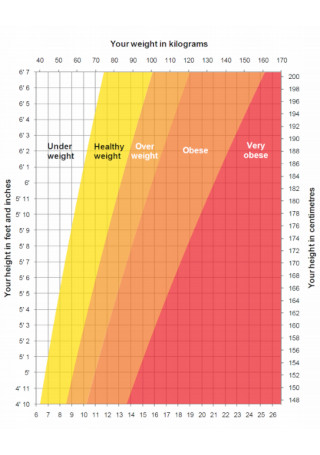
Sample Ideal Weight in Kilogram Chart Template
download now -
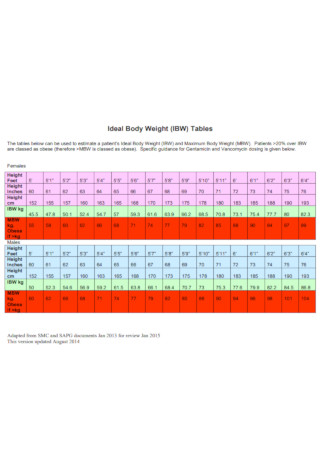
Ideal Body Weight Tables Chart Template
download now -
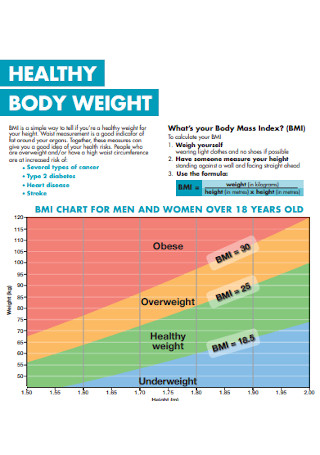
Healthy Body Weight Chart Template
download now -

Free Maintaining Healthy Weight Chart Template
download now -
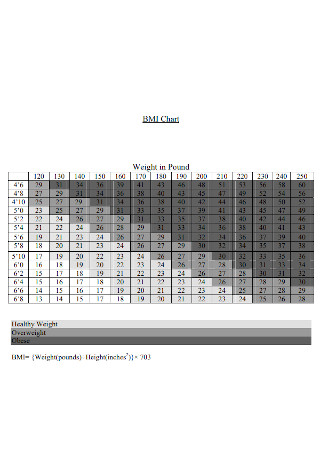
Weight in Pound Chart Template
download now -
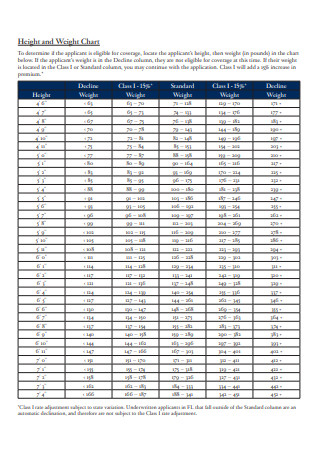
Height and Weight Chart Template
download now -
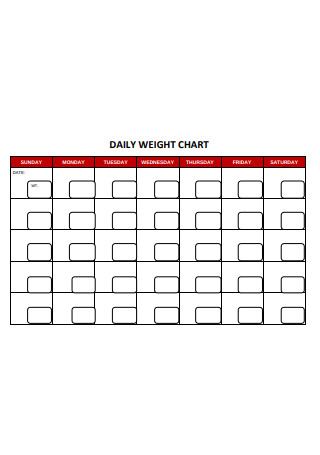
Daily Weight Chart Template
download now -
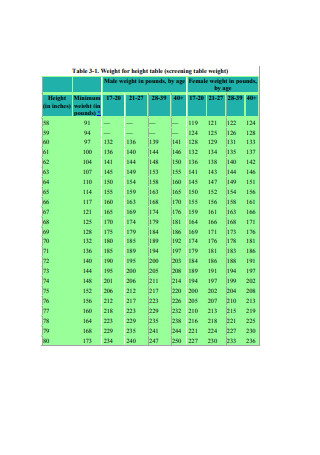
Male Weight Chart
download now -
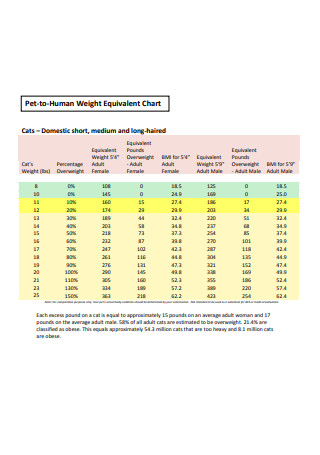
Human Weight Equivalent Chart
download now -
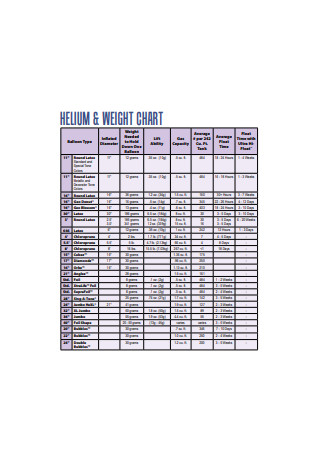
Helium Weight Chart
download now -
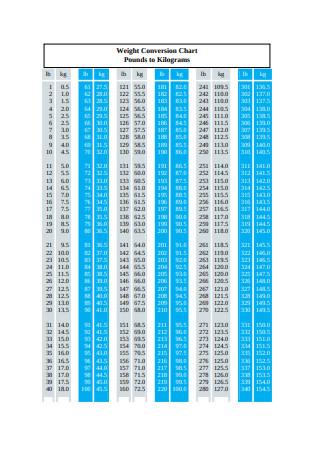
Weight Conversion Chart
download now -
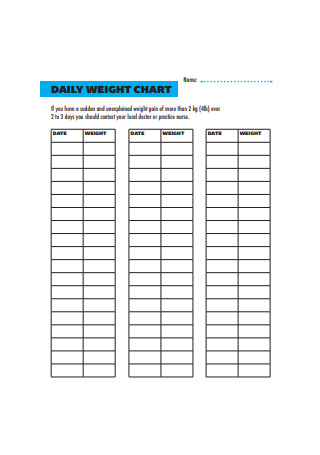
Free Daily Weight Chart Format
download now -

Pregnancy Weight Gain Chart Template
download now -
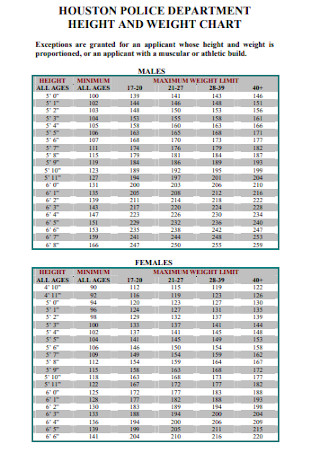
Free Police Height and Weight Chart Template
download now -
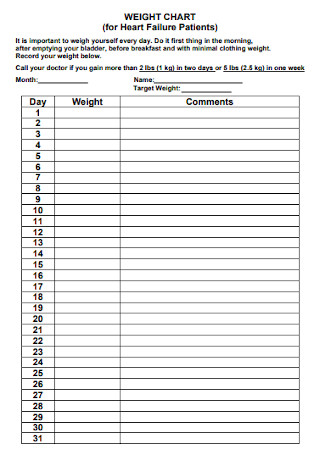
Weight Chart for Heart Failure Patients
download now -
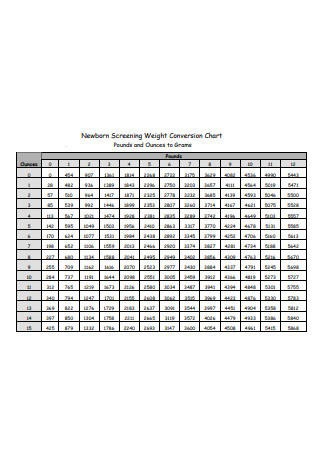
Newborn Screening Weight Conversion Chart
download now -
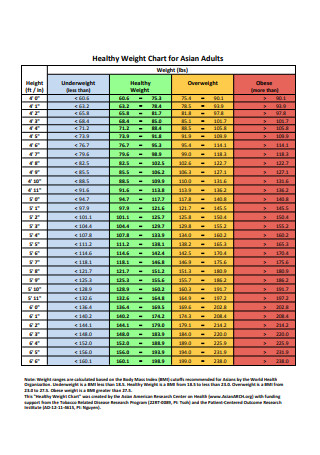
Healthy Weight Chart
download now -
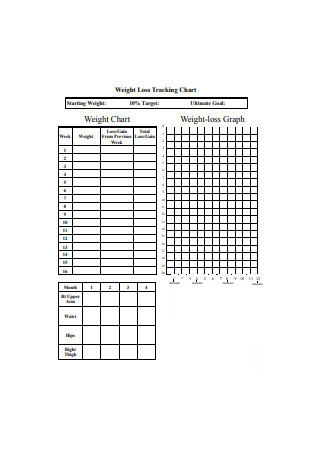
Free Weight Loss Tracking Chart
download now -
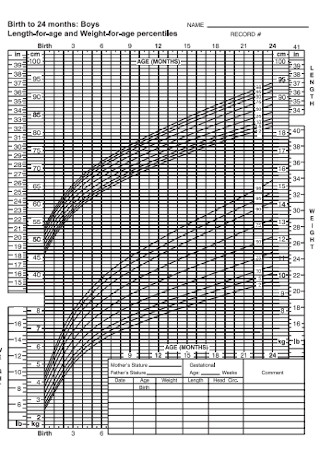
Sample Ideal Weight for Age Percentage Chart
download now -
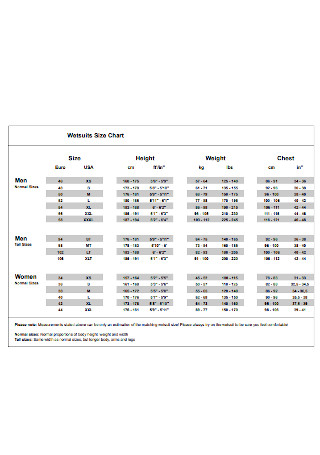
Mens and Womens Height Weight Chart
download now -
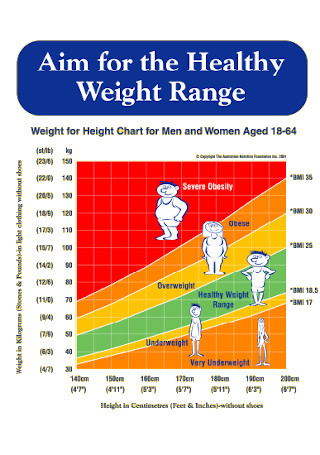
Sample Healthy Weight Range Chart Template
download now -

Healthy Weight Chart for Adults
download now -

Free Weight Conversion Chart
download now -

Ideal Body Weight Charts Template
download now -
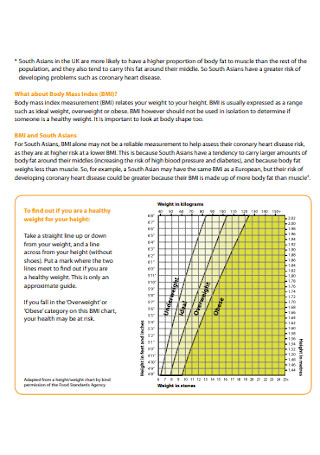
Sample Losing weight Chart Template
download now -
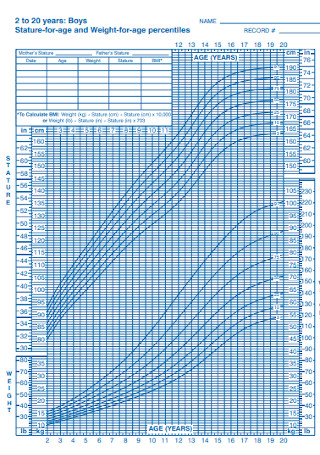
Boys Weight Percentage Chart Template
download now -
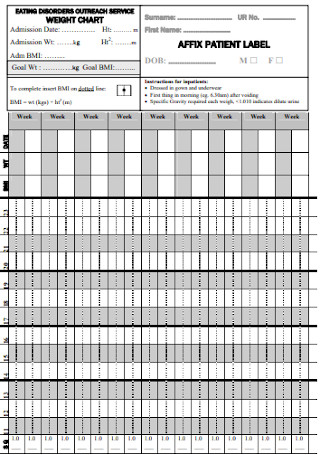
Basic Weight Chart Template
download now -
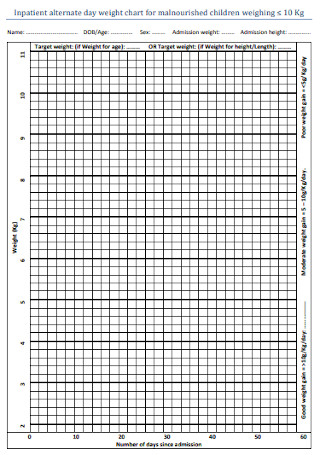
Inpatient Alternate Aay Weight Chart
download now -
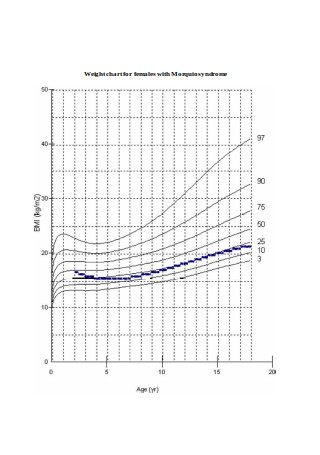
Weight Chart for Females
download now -
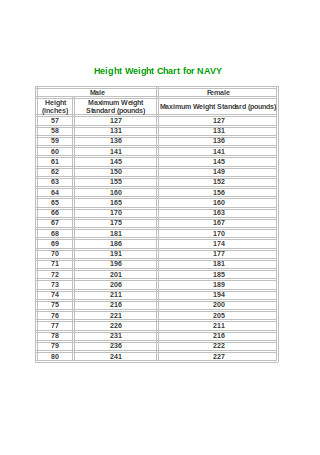
Height Weight Chart for Navy
download now
FREE Free Ideal Weight Chart s to Download
29+ Free Ideal Weight Charts
What is an Ideal Weight Chart?
Methods to Measure a Healthy Weight
How To Achieve Your Ideal Body Weight
FAQs
Why is it important to maintain a healthy weight?
Is it healthy to lose weight at a fast rate?
Does diet affect a person’s weight more than exercise?
Are there ways to lose weight without strict dieting and exercising?
What is the mortality rate for obesity?
What is an Ideal Weight Chart?
An ideal weight chart is a table that determines an individual’s ideal weight based on his/her height. Body Mass Index is the most commonly used tool for deciding an individual’s healthy weight. Generally, the higher a person’s BMI is, the more fat he/she has in his body. The BMI chart templates we mostly see online are for adults who are 20 years old and above. Though the height and weight factors depend on whether an individual is male or female, the same BMI calculations apply. A person who has a BMI that is below 18.5 is underweight, while one who has a BMI that ranges from 18.5 to 24.9 is normal. Moreover, a person who has a BMI that ranges from 25 to 29.9 is overweight, and one who has a BMI that exceeds that number is obese.
For kids and teenagers, the US Centers for Disease Control and Prevention has growth charts that are gender- and age-specific. These charts convert the BMI number to percentile. So, a child with a BMI that is less than 5% is underweight, while a child with a BMI ranging from 5% to 85% has normal weight. Furthermore, a child who has a BMI ranging from 85% to 95% is overweight, and if it exceeds that percentage, the child is obese.
Methods to Measure a Healthy Weight
People often wonder what their exact ideal weights are, but several factors contribute to a healthy weight. These factors include height, age, sex, body fat, and body type. With that said, here are the different methods to measure a healthy weight.
How To Achieve Your Ideal Body Weight
Achieving your ideal body weight can be challenging, especially when you are trying to shed off some weight. To make things easier for you, here are four steps that will help you reach your ideal body weight.
Step 1: Mind Your Calories
A survey done by the International Food Information Council Foundation shows that only 30% of the American people know the role of calories when it comes to gaining weight. Calories are what we get from the food we eat and what we use for energy. Not all individuals have the same caloric need because this need depends on a person’s age, gender, height, weight, and physical activity. For you to know the number of calories you must take for each day, you must know your basal metabolic rate. BMR is the number of calories your body uses to execute internal body functions such as breathing, protein synthesis, cell production, and more. Knowing this will help you count your calories better.
Step 2: Eat Your Fruits and Veggies
If you’re looking for low-calorie food, then fill your diet with fruits and vegetables. Not only are they low in calories, but they also contain a lot of fiber. Note that a high-fiber diet offers many benefits, such as better bowel movement, lower cholesterol and sugar levels, and more. Moreover, people who take more of these foods are less likely to develop diseases such as cancer, diabetes, obesity, and cardiovascular disease. Eat at least four and a half cups of fruits and vegetables every day.
Step 3: Don’t Forget to Include Protein in Your Diet
Foods rich in protein are not only for tough people in the gym, but they are also for ordinary people. Protein is essential for maintaining normal body processes, and it also helps in reducing the feeling of hunger. Compared to carbohydrates and fats, protein can make you feel more full. Moreover, it has a high metabolic cost, which means your body has to burn more calories to break it down into something your body can use. If your plan is to lose weight, go for lean meat. Lean meat has lesser fats, which means lesser calories. Eat at least one serving of quality protein in every meal, which is about half a cup.
Step 4: Exercise
Supplement your diet with exercise to quicken the progress. According to the World Health Organization, adults from 18 to 64 years old should perform at least moderate-intensity aerobic exercises throughout the week for about 150 minutes, or do high-intensity aerobic exercises for about 75 minutes per week. Moderate-intensity activities include brisk walking, jogging, swimming, ballroom dancing, and more. High-intensity activities include sprinting, tennis, jumping rope, cycling at high speed, and more. Moreover, strengthening exercises should also be incorporated into the weekly routine. Muscle strengthening exercises include push-ups, shoulder presses, dumbbell rowing, planking, squats, and lunges.
FAQs
Why is it important to maintain a healthy weight?
As we have mentioned earlier, being overweight can increase your chances of having chronic diseases such as heart disease, hypertension, diabetes, and cancer. On the other hand, maintaining a healthy weight offers you several benefits. It lowers your risk of having diseases, it makes you feel good, and it gives you more energy to perform your daily activities.
Is it healthy to lose weight at a fast rate?
No, it is unhealthy to lose weight at a quick rate. Why? Several studies show that individuals who lose their weight at a slower rate are less likely to experience rebound weight gain. According to experts, the healthy rate of losing weight is about 1 to 2 lbs or 0.5 to 0.9 kg per week, and that is 8 lbs or 3.6 kg per month. If a person loses weight at a faster rate in that, it may pose a lot of health problems such as gallstones, muscle wasting, malnourishment, and a slower metabolism.
Does diet affect a person’s weight more than exercise?
According to Shawn M. Talbott, Ph.D., a nutritional biochemist, diet accounts for 75% for weight loss, while exercise only accounts for 25%. About 700 studies concerning weight loss made it evident that people who eat smart see results quickly. People who only dieted for 15 weeks got rid of 23 lbs, while people who only exercised got rid of only 6 lbs. It only shows that it is easier to lose weight by cutting off calories than by burning them off. For example, if you eat a huge slice of pizza that is equivalent to 800 calories, you have to perform extremely vigorous exercises for more than an hour just to get rid of it.
Are there ways to lose weight without strict dieting and exercising?
Yes. The following are practical ways to lose weight: (1) Chew your food slowly so you will only eat less. (2) Use small plates. (3) Eat a lot of protein to keep yourself full for a long time. (4) Get rid of unhealthy snacks. (5) Eat foods that are rich in fiber to increase satiety. (6) Drink plenty of water. (7) Get enough sleep to prevent stress hormones from elevating. (8) Eat in small portions. (9) Don’t watch TV while eating to prevent overeating. (10) Avoid drinking sugary beverages.
What is the mortality rate for obesity?
According to one article published by The Commonwealth Fund in 2018, obesity is the cause of 18% of deaths in the U.S. in 2013. This places its mortality rate near to 5%, which means that it is almost equal to cigarette smoking: the leading cause of death among Americans in that year.
Maintaining or achieving your ideal body weight is not an easy task to do, but it can be worth your effort. The fact that it benefits your overall health should be enough to keep you going. Bear in mind that you don’t significantly lose or gain weight overnight. So, when you see a big difference between your present weight and ideal weight, be patient with yourself. Proper weight management requires you to keep an eye on your ideal body weight and follow the necessary steps to obtain it. Once you reap what you sow, all you need to do is to maintain it. It won’t be as hard as trying to reach the perfect weight.
